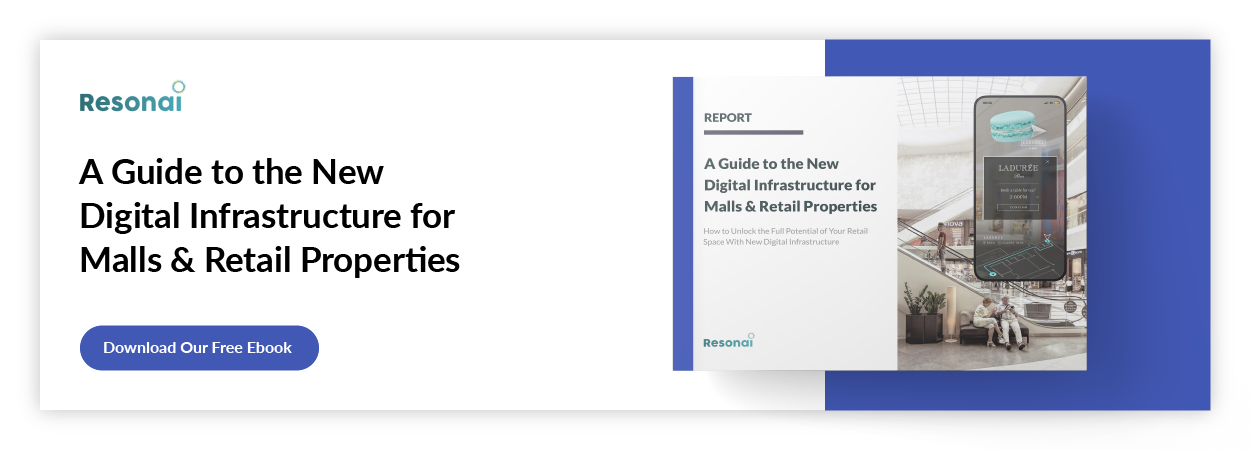7 Retail Signage Design Best Practices You Need to Know
Before you start your next retail sign design, make sure you’re following these longstanding and newly emerging guidelines.

Crafting the perfect retail signage design for your business can make a huge difference. While research has shown that adding new signage in general can have an outsized impact on foot traffic and sales, following fundamental as well as newly emerging best practices will ensure your signs more than cover their installation cost.
This article will help you increase the revenue generated by brick-and-mortar locations with practical retail signage guidelines informed by real-world research and use cases. We’ll run through time-tested tips for making the most of each sign, as well as evolving practices in the medium. But first, let’s lay out the fundamentals of retail signage design.
Jump to a section…
What is retail signage design, and how is it changing?
3 time-tested retail signage design best practices
Signage should show your unique value
Changing signs typically has a positive impact on sales
4 new and evolving retail signage design best practices
Digital and fabric signage offer eye-catching possibilities
Use color studies to your advantage
Consider how people move near your sign
Augmented reality adds a new dimension to design work
Looking for ways to take your retail signage design into a new era of possibilities? Download our free ebook to learn how AR could work for your business.
What is retail signage design, and how is it changing?
Retail signage design is the practice of creating signs for physical retail locations, whether displayed on free-standing pylons outside the building, hung above the front door, or peppered throughout a location to inform customers of new products and promotions. The practice inherits some of the same fundamentals of graphic design intended for any public location, but its focus on informing customers of the location, drawing them into the building, and enabling purchases makes retail signage design a specialized discipline all its own.
Records of advertising on stone and brick structures date back to at least 3,000 BCE. Some of the same principles for making good signs in the bronze age still apply today. However, the dawn of digital signage and all-new communication mediums such as augmented reality have led to new ways to reach engaged visitors and curious passers-by alike. Before we get into what’s new in retail store signage design, let’s talk about some fundamentals no designers should overlook.
3 time-tested retail signage design best practices
A University of Cincinnati study on “The Economic Value of On-Premise Signage” lays out some primary concerns that apply to commercial signs of all kinds. Here are three of its biggest takeaways:
Legibility is paramount
Standing out with unique aesthetics is a valid approach, but if people can’t read your sign, your sign can’t do its job. Another poll from the University of Cincinnati ranked the reasons that signs could be hard to read according to shoppers. The top 5 most common complaints were:
- 83% — the letters are too small
- 71% — the sign is poorly placed
- 64% — the sign is not well lit at night
- 60% — the color of the lettering is too close to the background
- 48% — the font of the lettering is too “fancy” to easily understand
If you keep each of those statistics in mind as retail signage guidelines, your signs will always be able to serve their primary purpose of effectively communicating your business.
Signage should show your unique value
People should be able to look at your sign and understand why visiting your location is worth their time and money. For niche retailers in particular, it’s essential that signage conveys a promise of value that cannot be found elsewhere. You likely already have a good idea of what your business' unique value proposition is, so make sure that your retail signage design carries that same message.
Changing signs typically has a positive impact on sales
Though it’s natural to want the perfect design the first time around, here’s a figure that may encourage you to change your signs now and later: About 60% of businesses reported an average 10% sales increase after changing their signs. On top of that, about a quarter of respondents reported improved hiring afterward. Changing signage will always be a balancing act between retaining business identity and bringing in a new look, but you may want to err on the side of keeping things fresh.
One quick reminder: Don’t forget to consult any ordinances regarding how large signs can be and where they can be placed in your business’ area. These regulations will be much easier and less costly to contend with while you’re still in the design phase.
4 new and evolving retail signage design best practices
Recent years have seen a massive expansion in the possibilities for retail store signage design, as well as signage for just about any business operating in or near public spaces. Here are four modern best practices to inform your next signage design decisions.
Digital and fabric signage offer eye-catching possibilities
Changing signs leads to bolstered business, but you don’t have to undertake a full-scale construction project every time you want to freshen up your look. Modern possibilities in digital signage allow you to change signs on a seasonal or even daily basis if desired. Meanwhile, if a particular location calls for a more analog solution, technological advances have made fabric printing affordable as well as practical, thanks to its durability and ease of setting up and tearing down.
Use color studies to your advantage
Picking the right color for your signage can be just as important as choosing the proper words. Adobe Marketo Engage put together a compelling graphic that presents the most popular color choices broken down by brands. It offers some handy insight into why you may want to hit the brakes on red signage for clothing stores, but give red the proverbial green light if you’re selling tech.
Consider how people move near your sign
As we said before, legibility trumps all other concerns for retail signage design. However, more than just the sign and its immediate surroundings can dictate its legibility. If you have a set location for a sign, consider all the different contexts from which modern pedestrians, drivers, bus commuters, Uber passengers, bicyclists, and more will see it. Drivers passing by at highway speeds may not be able to read more than a bold word or two before your business is in their rear-view mirror, while pedestrians may be drawn in by more intricate designs. Bus riders will be at a different height than bike riders, and so on. If you haven’t determined where your sign will go yet, use these considerations to shape your overall approach.
Augmented reality adds a new dimension to design work
What started with prominently placed QR codes leading in-person visitors to online promotions has become an all-new medium of its own. Augmented reality is one of the most promising new avenues for retail signage design because it opens the door to an entirely new medium of messaging, crafting a hybrid experience that cannot be replicated by traditional ecommerce or brick-and-mortar approaches. It also creates all-new creative possibilities for signage design, unconstrained by building budgets, local ordinances, or even the laws of physics.
Want to learn more about how your approach to retail signage can improve foot traffic, increase revenue, and more? Be sure to check out Retail Store Signs: The Ultimate Guide.
If you’re looking for the best retail signage guidelines to inform your enterprise, don’t overlook the use cases presented by AR. To learn more about the new possibilities businesses can find from AR, download Resonai’s latest ebook: A Guide to the New Digital Infrastructure for Malls & Retail Properties. You’ll learn how brands can use AR to push their retail signage as well as the rest of their business forward with approachable, affordable, and effective applications.
Subscribe to Our Newsletter!
Read More
3 Storefront Signs Turning Foot Traffic Into Sales
Retail signage tech has evolved rapidly in recent years. The rise of digital signage, mobile...
The 5 Biggest Benefits of Indoor Retail Signage
Brand building and advertising is more complex than ever in the digital age as key demographics...
Retail Store Signs: The Ultimate Guide
The death of in-store retail is greatly exaggerated. Despite the COVID-19 pandemic and overall...
